If you’re new to lifting weights, this upper-body workout for beginners is a great way to start building strength in all the major muscle groups in your top half.
In this workout, which was created by NYC-based personal trainer Alyssa Expósito, you’ll be cycling through just four moves. But each of these moves is foundational and plays an important role in building upper-body strength. In fact, these basic exercises will help you master the fundamental movement patterns you need to get stronger over time.
The exercises in this upper-body workout focus specifically on pushing and pulling movements, Expósito tells SELF. Pushing and pulling are two types of functional movements, which means they are motions we perform in everyday life; just think about pushing or pulling a door open. So focusing on them during your strength training workouts will not only help you lift more efficiently in the gym, it will also simply help you move better in everyday life.
You’ll work on your pushing strength with the alternating single-arm chest press and the shoulder press, while the bent-over row will help you build pulling strength. With pushing exercises, you primarily work the muscles in the front of your body, like your pectorals (chest muscles) and deltoids (shoulder muscles), while pulling muscles hit the back of your body, like your latissimus dorsi (the large triangular muscle spanning from your armpit to your back) and your rhomboids (small muscles that allow you to retract your shoulder blades).
Plus, there’s a fun bonus to this upper-body workout: You’ll engage your core too, Expósito says. There’s one core-focused exercise in the routine, but your core is also firing during your other moves to keep your body stable.
Remember, a workout routine does not have to be complicated to be effective—you don’t have to do tons of exercises. Progress comes from consistency and (if your goal is to get stronger) continually challenging yourself to lift more weights or complete more reps.
As for how much weight you should use for these moves? A good rule of thumb is to choose weight that is challenging enough that the last couple of reps feel difficult: Your form shouldn’t falter, but you also shouldn’t feel you have loads more reps in the tank.
“You don’t want to go too heavy, but you also do not want weight you can perform 30 reps with,” Expósito says. “You shouldn’t be able to exceed 15 reps with the weight chosen. All movements should be performed with full range of motion, in a slow and controlled way.”
Before getting started, Expósito stresses, it’s important to do a dynamic warm-up to get your body ready for the work ahead. If you need an idea, here’s a 5-minute one you can try.
Ready to get started with this fun, efficient, and straightforward upper-body workout for beginners? Here’s what you need.
The Workout
What you need: A pair of medium-weight dumbbells. The actual weight varies for everyone, but you’ll know you’re on the right track if your last couple of reps start to feel really challenging. You’ll also need a set of sliders, though two towels or paper plates will work too. An exercise mat can help for comfort as well.
The Exercises
- Body saw
- Alternating single-arm chest press
- Bent-over row
- Shoulder press
Directions
- Complete 12 reps of each exercise, moving from one to the next in circuit form. After all four exercises are done, rest for 2 minutes. Complete 3 rounds total.
Demoing the moves below are Amanda Wheeler (GIF 1), a certified strength and conditioning specialist and cofounder of Formation Strength; April Nicole Henry (GIFs 2 and 4), a strength athlete based in New York City; and Cookie Janee (GIF 3), a background investigator and security forces specialist in the Air Force Reserve.
-
Pinterest
Katie Thompson1 Body Saw
- Start in a forearm plank—elbows directly under your shoulders, arms parallel—with your toes on a set of sliders. Tuck your tailbone and engage your core, butt, and quads.
- Slowly push with your forearms and elbows to slide yourself as far back as you can without losing core engagement. Don’t let your hips sag.
- Slowly pull yourself back to start for 1 rep.
- Complete 12 reps.
To make this move easier, decrease the range of motion for each slide.
-
Pinterest
Katie Thompson2 Alternating Single-Arm Chest Press
- Lie faceup with your knees bent, hip-width apart, and feet flat on the floor. Hold a dumbbell in each hand, weights even with your chest, palms facing out.
- With your core engaged so your lower back stays flat against the floor, press both weights up toward the ceiling. This is starting position.
- Lower your right arm toward your torso until your upper arm taps the floor, while your left arm holds.
- Exhale as you straighten your right arm to return to your starting position.
- Repeat on the other side. This is 1 rep.
- Continue alternating sides for 12 reps.
Because you’re moving one weight at a time here, your core really has to fire to maintain stability. To make this move easier, take out the single-arm hold on top and press both of your arms up and down at the same time.
-
Pinterest
Katie Thompson3 Bent-Over Row
- Stand with your feet hip-width apart, holding a dumbbell in each hand with your arms at your sides.
- With your core engaged, hinge forward at the hips, pushing your butt back. Bend your knees and make sure you don’t round your shoulders. (Your hip mobility and hamstring flexibility will dictate how far you can bend over.)
- Gaze at the ground a few inches in front of your feet to keep your neck in a comfortable, neutral position.
- Do a row by pulling the weights up toward your chest, keeping your elbows hugged close to your body, and squeezing your shoulder blades for two seconds at the top of the movement. Your elbows should go past your back as you bring the weight toward your chest.
- Slowly lower the weights by extending your arms toward the floor. That’s 1 rep.
- Complete 12 reps.
The bent-over row works your lats and your rhomboids, as well as your biceps, which function as “assisting” muscles during pulling movements.
-
Pinterest
Katie Thompson4 Shoulder Press
- Stand with your feet about hip-width apart. Hold a dumbbell in each hand and rest them on the top of your shoulders with your palms facing each other and your elbows bent. This is the starting position.
- Press the dumbbells overhead, straightening your elbows completely. Make sure to keep your core engaged and hips tucked under to avoid arching your lower back as you lift your arms.
- Slowly bend your elbows to lower the weight back to the starting position. This is 1 rep.
- Complete 12 reps.
Along with working your deltoids, the shoulder press also hits your triceps, the muscles along the back of your upper arms—they “assist” your deltoids with overhead pushing movements.



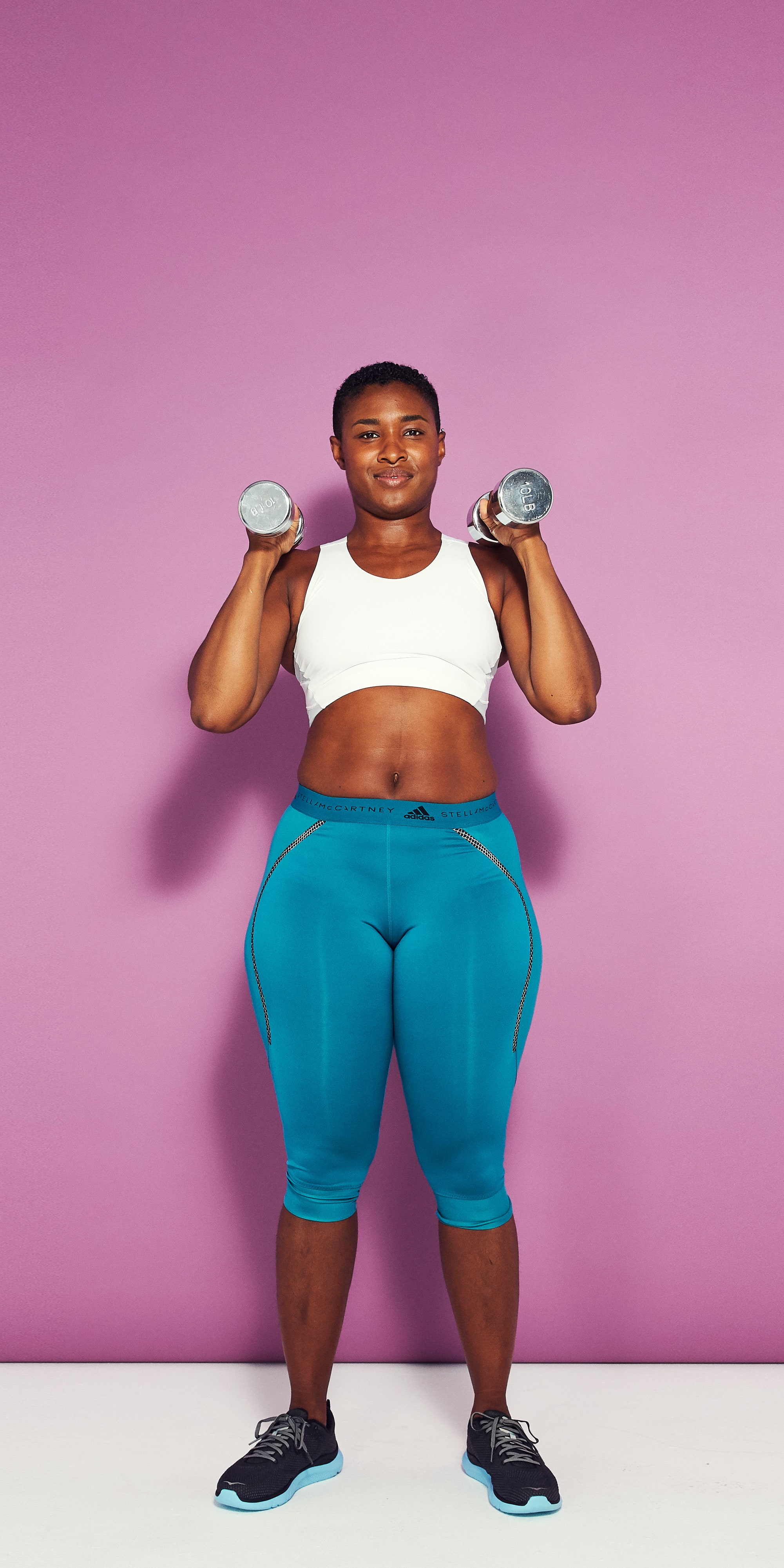
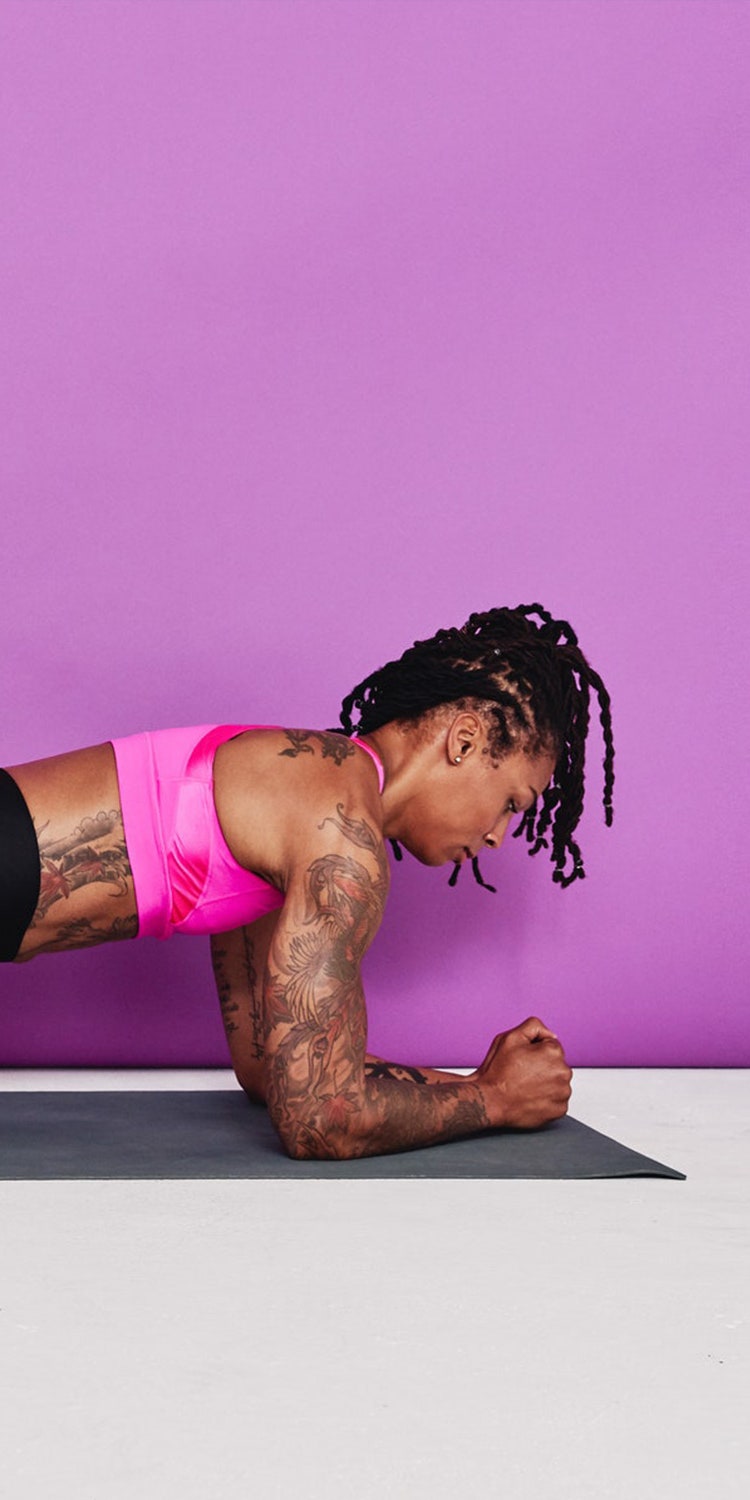
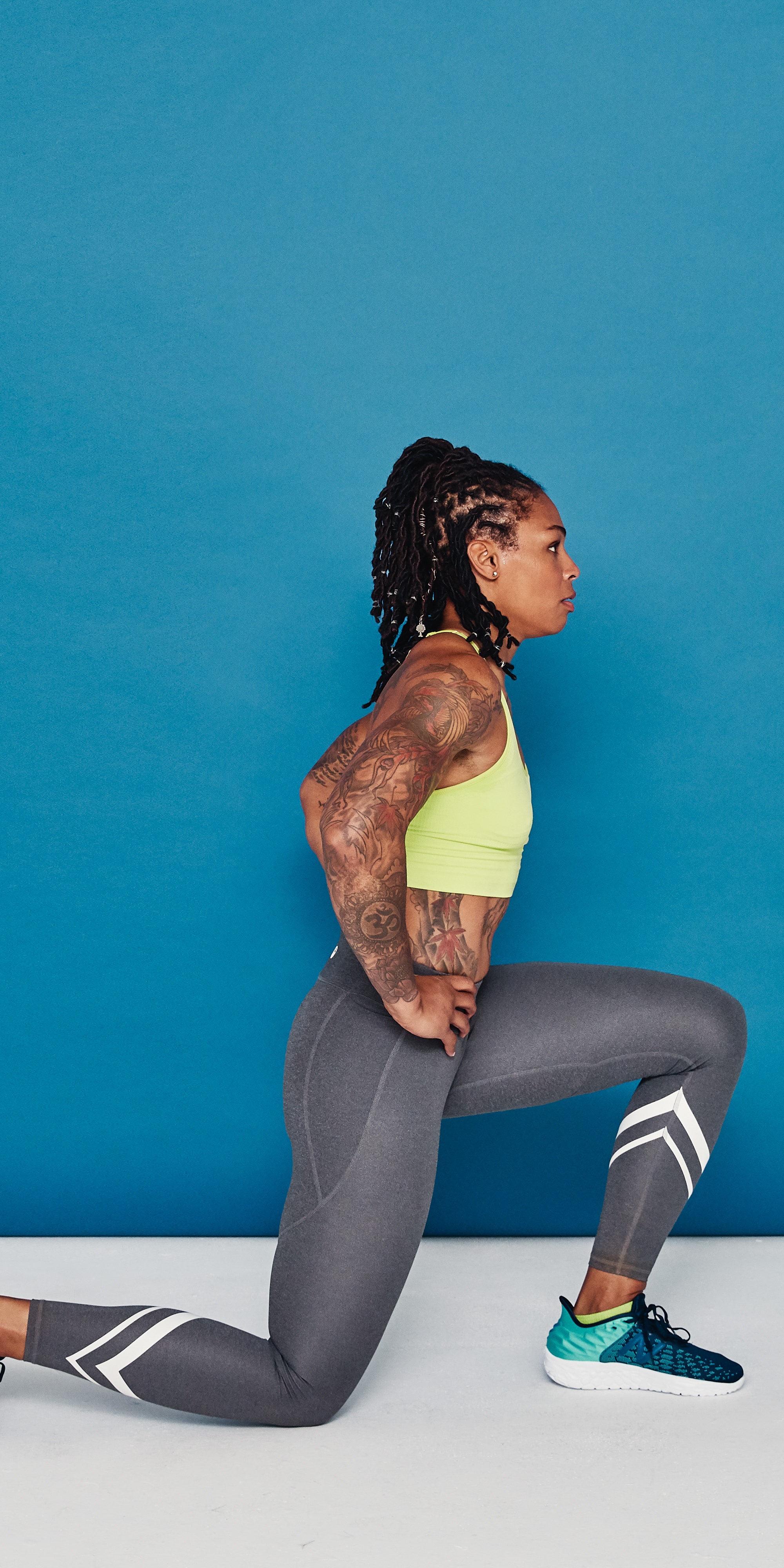
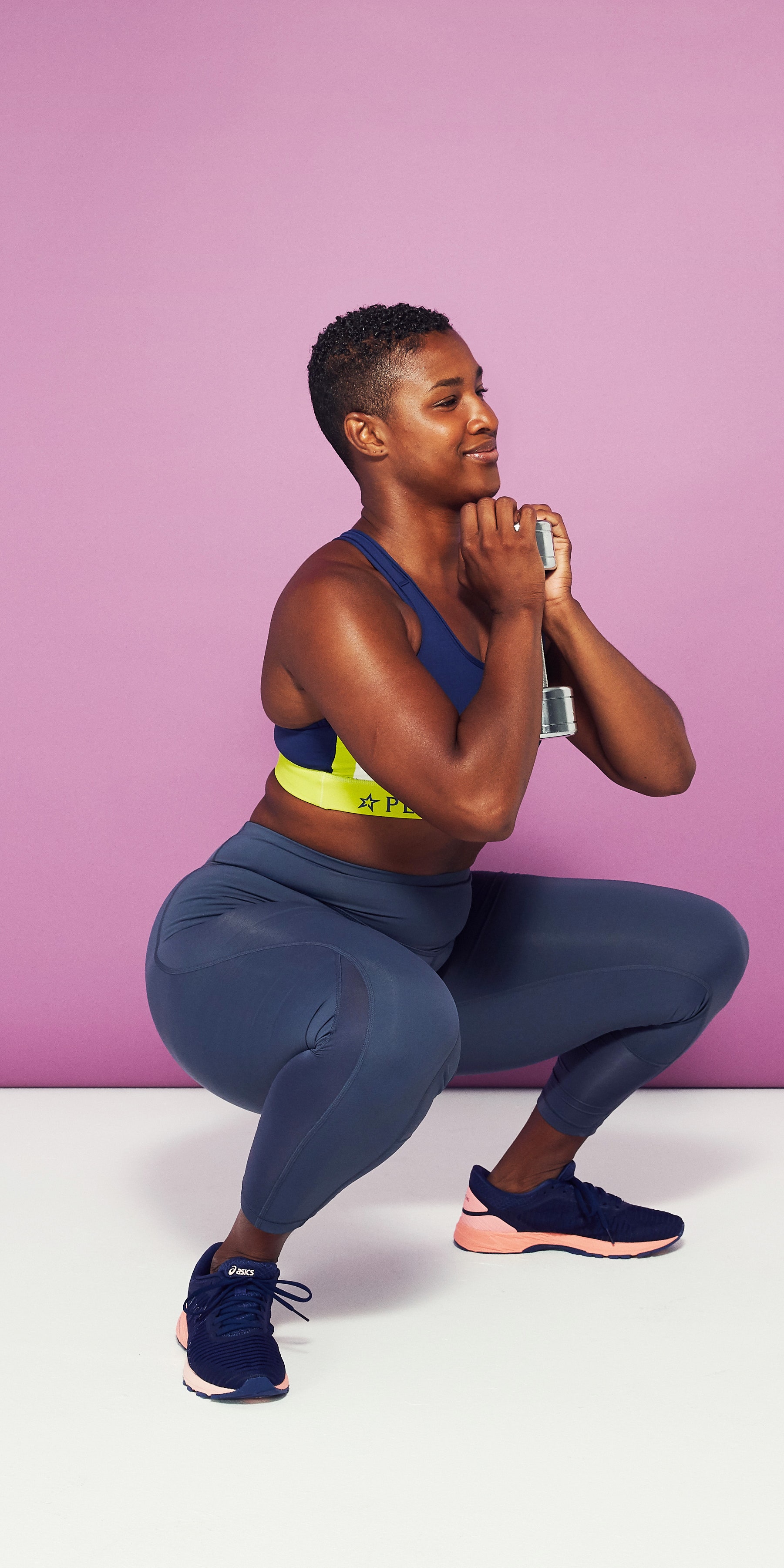
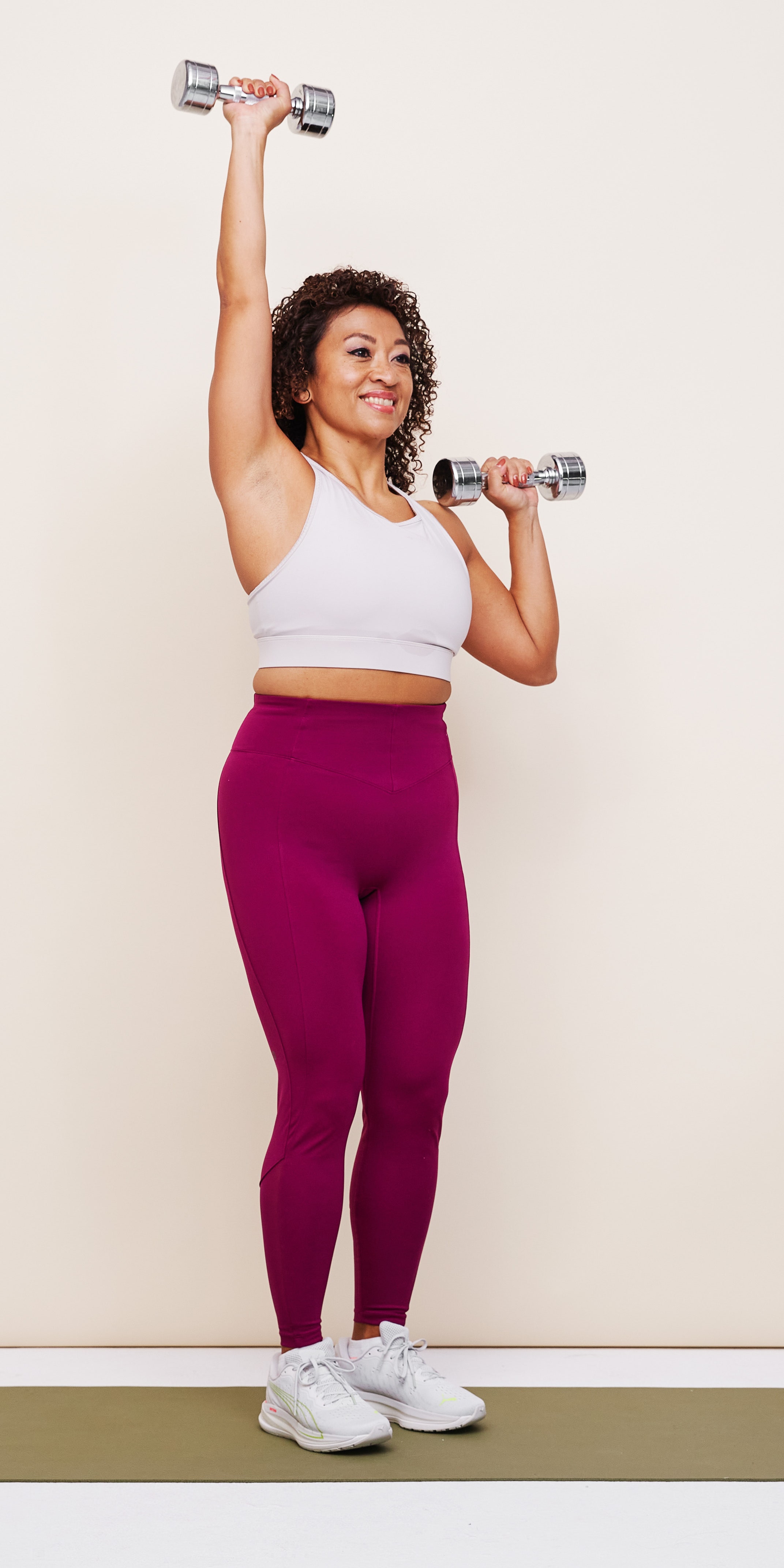
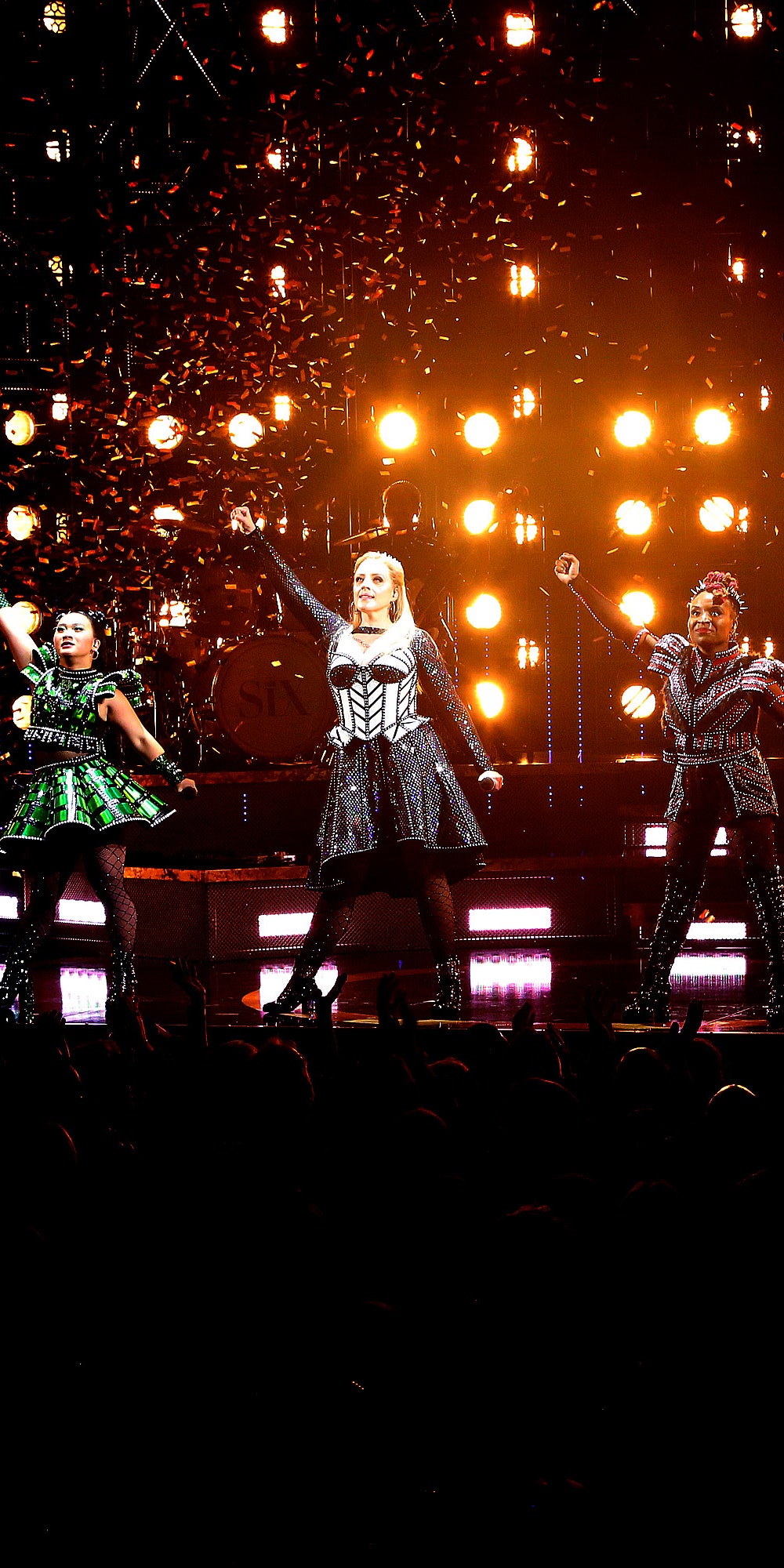
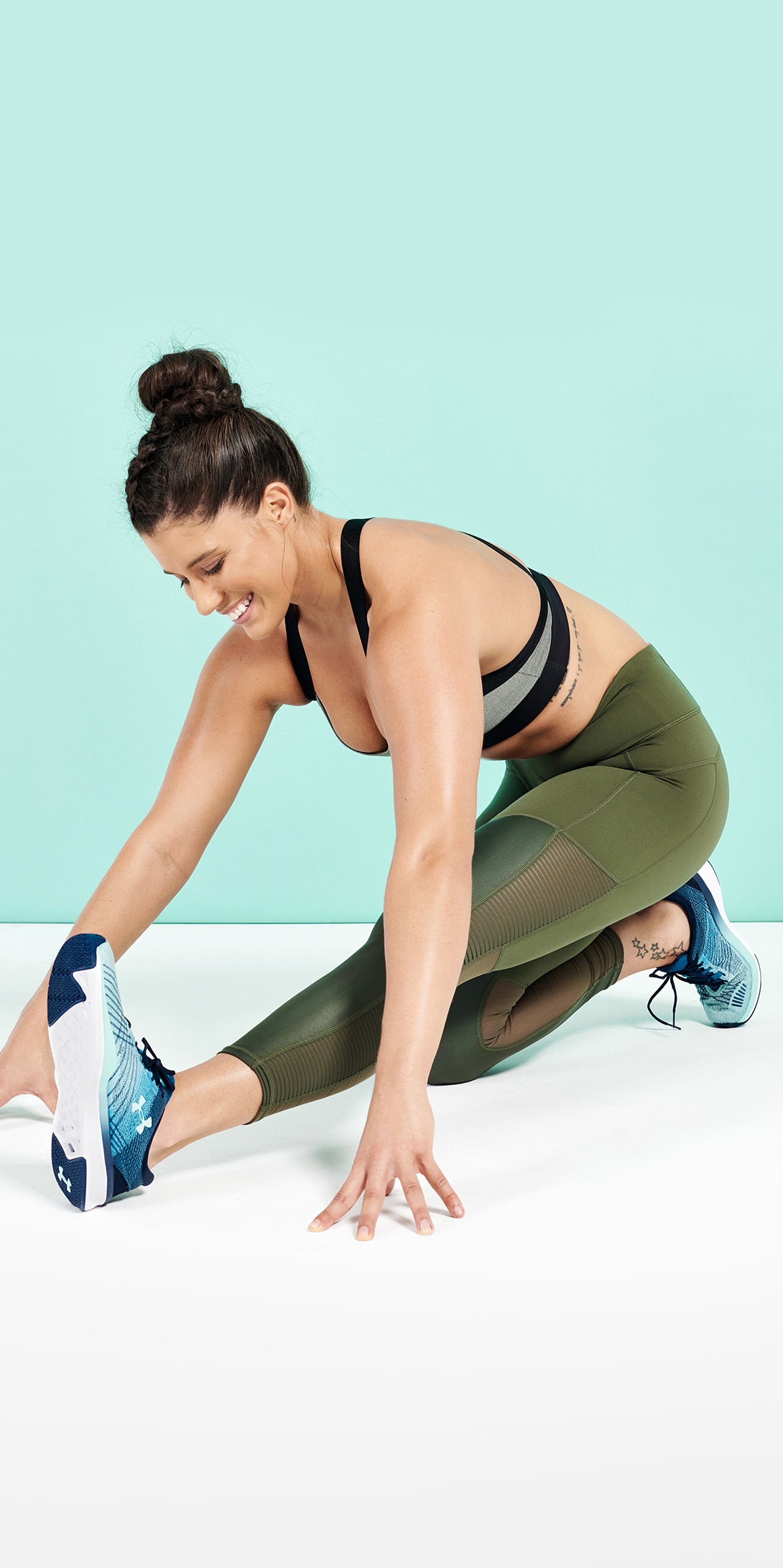
Leave feedback about this